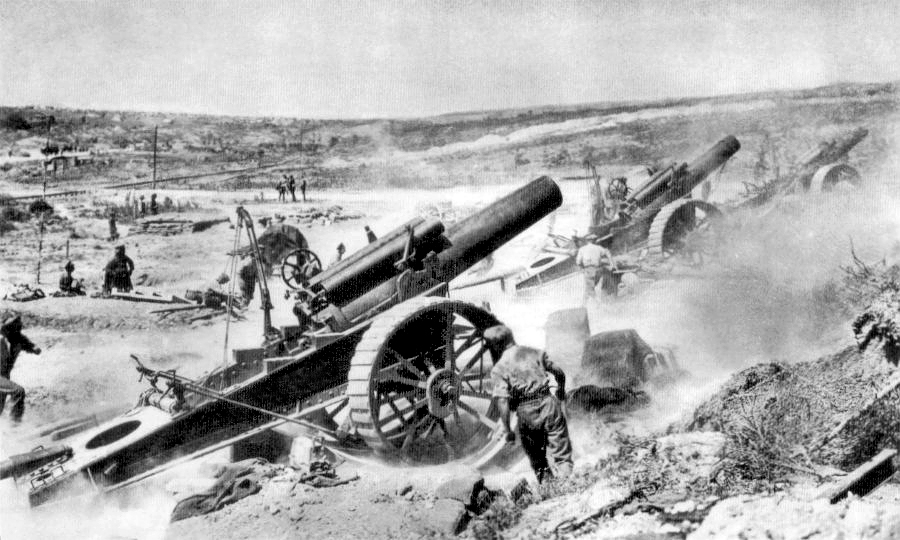The Battle of the Somme in London August 4, 2010
Author: Beach Combing | in : Contemporary , trackback
Britain historically – before that dread day in 1973 when the United Kingdom signed the Treaty of Rome – prided itself on its splendid isolation. But simple geography meant that Britain was far closer to Continental Europe than Japan, say, was to Asia. And no amount of well-intentioned pretending would make that fact go away.
Matthew Arnold walking on Dover beach watched the lights of France (‘Gleams and is gone’) and from Dover with a moderately powerful telescope it was possible to read the time on the church tower in Calais. In wartime too Britain was frequently made aware of that proximity: so cliff-walkers in Kent enjoyed the night fires from the bombing of Hitler’s invasion fleet in the autumn of 1940.
All this is unremarkable. But Beachcombing has recently remembered a record of Britons hearing rather than seeing the Continent. The reference is to the Battle of the Somme in 1916, the most disastrous military engagement in British history – over four hundred thousand British and Dominion troops butchered in the space of three months, sixty thousand casualties on the first day alone.
The initial Allied attack on July 1st was prefaced by an unprecedented seven day artillery bombardment with over twelve thousand tonnes of explosives being sent towards the German lines. On the morning of the attack itself the bombardment reached a crescendo with a quarter of a million shells being sent up.
Indeed, the bombardment on July 1st was so strong that it was heard in London over three hundred miles away. By some freak of physics not all the city was regaled with these auditory fireworks, but walkers on Hampstead Heath could hear the thuds from the British lines. Beachcombing believes that he once read – though he can no longer find the reference… – that some strollers claimed to feel the vibrations under their feet in London’s most impressive park.
Vibrations or noise there is, in any case, something almost unbearably sad about the conjunction of Hampstead Heath and the Somme. ‘The Heath’ is as English a place as you can find – urban yet rural, it first surfaces in history in a tenth-century charter. Beachcombing can’t help seeing it on that distant July day with Edwardian strollers and white lace umbrellas, nannies and children trying to be seen yet not heard and Cockneys racing their dogs or ‘having larks’.
Here was the squire-ridden, Liberal (capital l), puritanical, bucolic England that was about, minutes later, to be destroyed, as hundreds of thousands of young men, among them key representatives of the British imperial establishment and its most important families, charged towards the German lines, lines that had been, for the most part, untouched by the largest artillery barrage in history.
‘And bugles calling them from sad shires…’
Beachcombing has found several other references to sounds travelling over hundreds of miles including the eruption at Krakatoa in 1883 that was heard an extraordinary three thousand miles away! Any other remarkable sound journeys would be gratefully received. drbeachcombingATyahooDOTcom
***
1st Sept: Sandarina sent Beachcombing another example of Britain hearing the First World War. Beachcombing includes the whole passage because A.J.P. Taylor is always entertaining (The First World War, 189-190): ‘Early in June1917 Haig had a preliminary success before the great argument started, though the success was none of his doing. This was the great mining operation of Messines. Here a ridge, some one hundred and fifty feet high, ran to the south of the Ypres salient. It was in German hands; and from it they could observe everything that was going on behind the British lines. Sir Herbert Plumer, in command, was one of the few sensible British commanders despite his comical military appearance. For two years he had planned to blow the Germans off the ridge. Deep mines were dug, more than one hundred feet beneath the surface; they were stuffed with a million pounds of explosive. Often the Germans, digging somewhat closer to the surface, came so near the British miners that their conversation could be heard without listening apparatus. Often the alarm was raised that the Germans were breaking in and that the mines must be blown. By 6 June 1917 nineteen deep mines had been laid. AT 3.10 on the morning of 7 June they were all set off at once. Lloyd George heard the explosion in his room at 10 Downing Street.’ Thanks to Sandarina!



